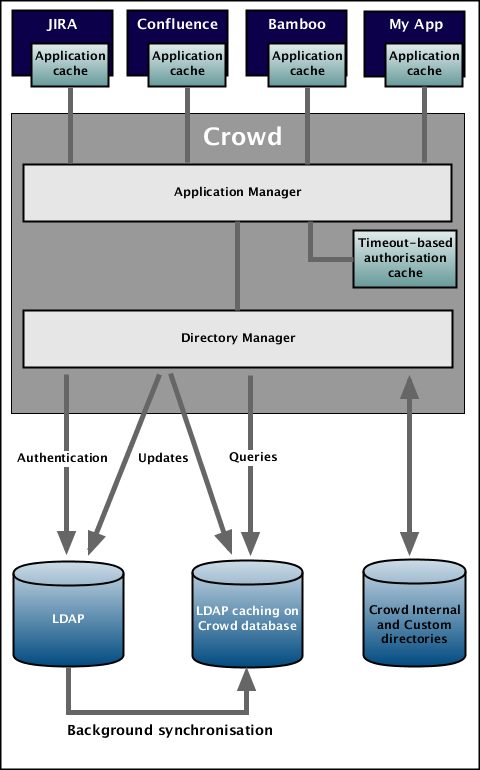Overview of Caching
Caching is used to store run-time authentication and authorization rules, which can be expensive to calculate.
In Crowd, data caching occurs in three main areas:
- Application caches in the applications that are connected to Crowd – Applications such as Jira, Confluence and Bamboo can store user, group and role data in a local cache. This helps improve the performance of Crowd, since these applications do not have to repeatedly request information from Crowd.
- An authorization cache on the Crowd server – To improve performance, Crowd can store users' authentication and per-application permissions in a local cache for a specified period. You can enable or disable this cache via an option on the 'General Options' screen in the Crowd Administration Console. See Authorization Caching.
- LDAP directory caches in the Crowd database – The Crowd database keeps an up-to-date cache of all user and group information from the LDAP directory. You can configure this cache on the directory connector screen. See Configuring Caching for an LDAP Directory.
This diagram gives a conceptual overview of the caches described above:

Last modified on Jul 22, 2022
Powered by Confluence and Scroll Viewport.